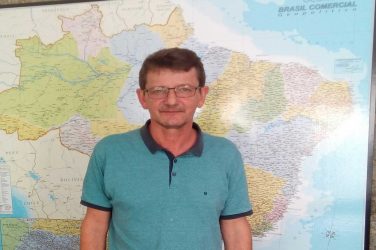A mighty river is flowing out of the Amazon rainforest, and it’s not the one you’re thinking of. In the first kilometre above the forest canopy, a “flying river” is transporting moisture evaporated from Amazonian trees southwards along the Andes mountains towards Rio Grande do Sul, the southernmost state in Brazil.
Almost the entire state – an area larger than the UK – is currently affected by unprecedented floods. The flying river has acted like a firehose, fueling five months of rainfall in just two weeks, further enhanced by a strong jetstream located in just the wrong position above the region. And, based on future projections of climate change, this situation will likely get worse as the temperature rises.
Since the beginning of May, those massive floods in Rio Grande do Sul have made world headlines. In the state’s capital, Porto Alegre, the Guaíba river is more than five meters above its normal level, breaking a record set in 1941. The death toll is 161 and growing, with 82 still missing. The floods have displaced more than 600,000 people and directly or indirectly affected more than 2 million, in 446 of the 497 municipalities in the state.
In various municipalities, the water and energy systems collapsed, leaving hundreds of thousands of homes with no power or drinking water. Schools suspended classes and the state’s main roads and airport are closed.
While the southern part of the country is under water, a heatwave caused record-breaking temperatures in the states of São Paulo, Rio de Janeiro and Minas Gerais. For scale, this is similar to all of northern France being flooded while Barcelona swelters in 40°C heat.
This is not the first time the southernmost part of Brazil has been affected by such large-scale disasters. Similar weather systems, featuring moisture from the Amazon near the surface and the jetstream crossing the Andes high above, were associated with floods between September and November 2023, as well as major floods in 1997 and 1983.
A combination of factors makes these floods more likely. For instance, warm ocean temperatures in the tropical Pacific (still currently the case, even as El Niño starts to decay) is associated with these weather systems, as are abnormally warm tropical Atlantic temperatures, which add more moisture to the air brought south in the flying river.
Things to come
Is this event a sign of things to come for southern Brazil? As the atmosphere warms, it can carry more water, which means there is the potential to form massive clouds and heavy rains. This is a bit like buying a more absorbent sponge: it can hold more water but when you squeeze, more water falls out.
In fact, we are already observing this. Compared with the floods in 1941, this time the excessive rainfall was concentrated in a much shorter period, meaning the water rose much faster. Future climate projections already indicate that a warmer atmosphere results in an intensification of the flying rivers from the Amazon into south Brazil and adjacent regions, and more precipitation.
We have analyzed results from state-of-the-art climate models that are able to simulate storms across South America in detail, just a few kilometers across. These indicate that extreme rainfall like that happening now is likely to become more frequent in the future, and such risks may in fact be underestimated by the previous generation of climate models.
These simulations, run under UK-Brazil and South America-US partnerships, are being used to assess such risks in southern Brazil and right across South America. Early results suggest that, as in Africa, parts of Europe, North America, India and elsewhere, short but very intense rainfall is likely to happen more often as the planet warms, irrespective of the unique weather systems that may affect particular regions.
Marcia Zilli is a postdoctoral researcher in Climate Dynamics at University of Oxford
Caio Coelho is a senior research scientist at Center for Weather Forecast and Climatic Studies (CPTEC), National Institute for Space Research (INPE) and Instituto Nacional de Pesquisas Espaciais (Inpe)
Neil Hart is a UKRI future leaders fellow at University of Oxford
This article was originally published in The Conversation. Read the original article here:
https://theconversation.com/floods-in-south-brazil-have-displaced-600-000-heres-why-this-region-is-likely-to-see-ever-more-extreme-rain-in-future-229965














